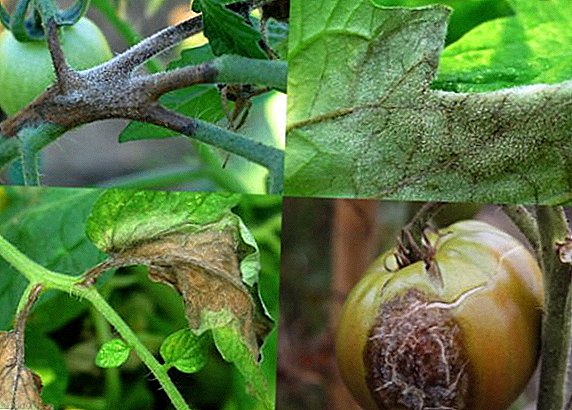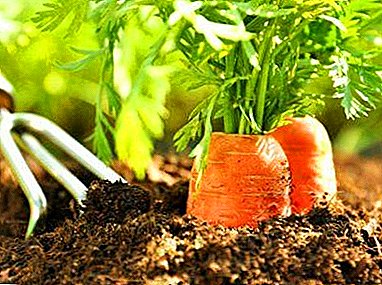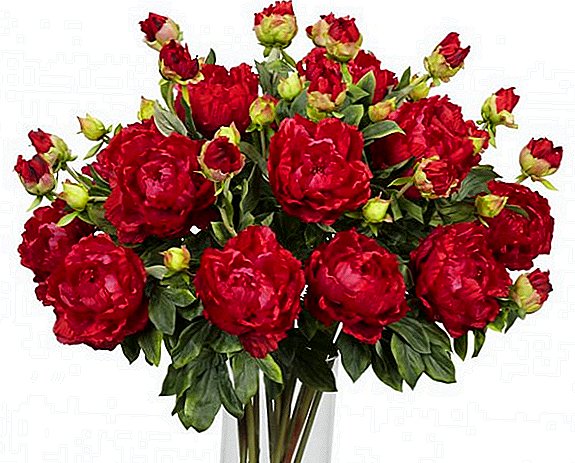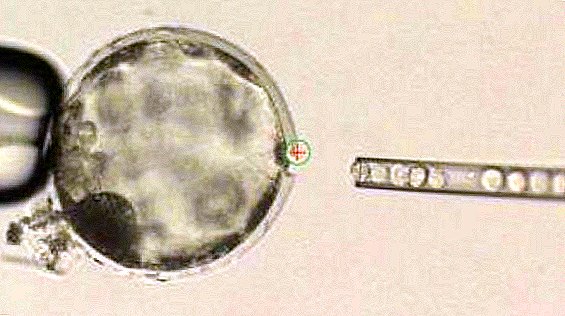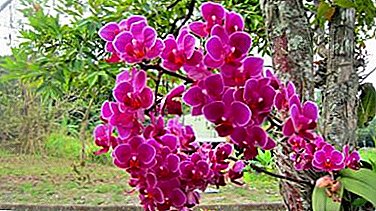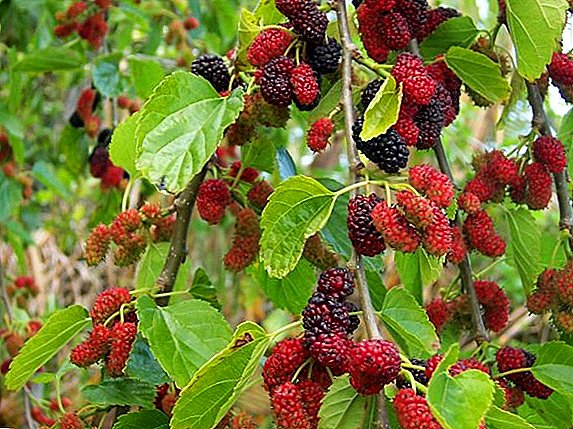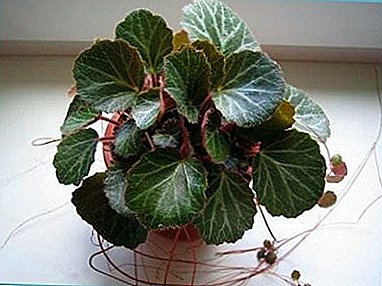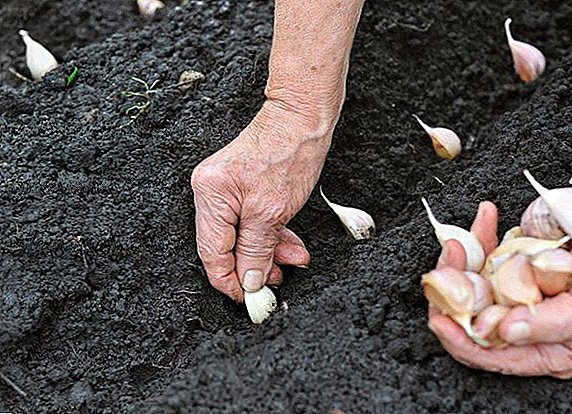 A perennial plant that gives us a lot of vitamins in the summer and in winter. To grow garlic in your garden, stock up on them for the winter, you need to know the important factors: place, time and conditions of planting. Adhere to further advice, and you can feed on the resulting harvest for a year.
A perennial plant that gives us a lot of vitamins in the summer and in winter. To grow garlic in your garden, stock up on them for the winter, you need to know the important factors: place, time and conditions of planting. Adhere to further advice, and you can feed on the resulting harvest for a year.
When is garlic planted?
Spring and winter are two kinds of equally tasty garlic. Their difference is only in the landing time. In turn, this factor also leads to differences in product characteristics: spring is stored longer, and winter is eaten immediately.
Almost all know about the beneficial properties of garlic (including shooters), so the hostesses prepare both heads and green garlic. But it can still harm the body.
Spring
First you need to know the features of this type: spring has an average of 12 to 20 teeth, all of them can vary in shape and size. In the center of the head you will not find the trunk, which will be present in the winter species.  Planting garlic should not just spring, but in a clear period. It’s better to do it as early as possible, but then the earth will warm up a little. The temperature should be approximately 7 ° C. The best time for landing will be the end of March or the beginning of April, depending on how soon it gets warmer.
Planting garlic should not just spring, but in a clear period. It’s better to do it as early as possible, but then the earth will warm up a little. The temperature should be approximately 7 ° C. The best time for landing will be the end of March or the beginning of April, depending on how soon it gets warmer.
This type of plant should be planted in the spring, as it matures better and will be able to lie in your house for a long time - until the very winter.
Winter
Around the winter species column there is a small (compared to the spring view) number of teeth - about 4 or 6. It is noteworthy that their number will always be even, while the slices will be of the same shape and size.
Planting winter garlic passes autumn before winter. Usually it is planted so late in order to immediately eat in the cold season, when other plants already stop their flowering period. Winter hardiness of winter garlic is very high, it can withstand temperatures up to -20 ° C.
Check out the list of top varieties for planting garlic before winter.
Focus on the month of October, but do not forget that every year frosts hit the ground differently and, accordingly, the crop. The main thing is to do it when you feel that it is cold enough outside. The option of landing immediately after the snow falls is also possible, although the process of digging up the earth will become more complicated, since it will become completely frozen.

The right choice of planting material
The most important thing that you need to pay attention to when choosing planting material is the method of storage after harvesting. It is important that he is in savings places at the right temperature.
If the garlic was kept in a warm room (up to 20 ° C), then the growing season of the plant will increase. At the same time, the lobules will become larger, however there is a risk that the head will not ripen by the time of harvest. In this case, it is necessary to ensure ripening by other methods.
Did you know? The name garlic is derived from the word "scratching", used in the meaning of separating (teeth).
With warm storage it is better to cool the planting material before planting. Leave it at a temperature of 5-7 ° С for a month. By the way, for this purpose the lower shelf of the refrigerator will fit. If the size of the head is large, then it will take more time to ripen.
In the case of storage at a lower temperature (from 1 ° C to 3 ° C above zero), the plant will ripen faster in the ground, but the segments will be small. In this case, it is recommended to plant only those heads that already have roots. 
The best landing conditions
If you want to get a rich harvest, then you need to think about planting much earlier than the planting itself. Absolutely everything plays an important role: place, time, preparation of the soil and storage conditions of the garlic itself.
Did you know? In Central Asia, garlic was used as an antidote to some snake bites.
In the spring
If the plant lacks moisture, it will root badly. This is highly undesirable, since deep roots must ensure the normal functioning of the entire system. Otherwise, the garlic will begin to take the nutrients it needs from the fetus - cloves. As a result, they will become lethargic and tasteless, and the harvest will drop significantly.
Spring varieties of garlic are best planted in loamy soil. The properties of this type of land are ideal for flowering plants in the warm season - it perfectly passes water, while it is able to provide garlic with all the microelements important for its development.
Did you know? Garlic greens will appear if planted in spring. The plant begins to form side feathers, which we add to salads.

Before winter
Consider how to plant garlic under the winter so that it was eventually large and at the same time ripe. First, you need to know that the roots begin to grow at about 3 ° C, while the leaves at 4-5 ° C. The earth will heat up to such marks if it is about 15-20 ° С outside.
Choosing a place, you need to proceed from the fact that the plant must be in the sun. Do not choose dark areas or those that will receive a shadow during the day. Do not plant the plant on the ground where potatoes used to grow, as there is a great chance that a useful perennial to be infected with something from its predecessor. Note: after the growth of garlic, do not plant onions on this soil.
The best predecessors for garlic are legumes - peas, beans, beans, zucchini, pumpkin, tomatoes, green manure, cauliflower.
Besides, there should be no stagnation of water. The best soil for winter garlic is sandy. It contains a lot of sand. This soil is easy to handle, as it is loose. Sandy ground thaws earlier in early spring, and this is an important condition for those plants that are in frozen ground. It should be noted that this type of soil will need to be watered and fed more often.
Correct fit
For planting spring varieties, use well-dried garlic, since if it contains moisture, it will immediately start growing, and this is undesirable for spring varieties. For winter garlic planted in the fall, this rule does not apply. 
Check the quality of the teeth before planting: for this, clean the husks a little, if you find spots or browning, it is better not to plant such garlic.
Spring
When planting a spring view, do not hide the roots too far under the ground. Choose the largest cloves.
Important! The optimal distance between the teeth - 6-7 cm.10 by 20 cm is the approximate area on which one planted lobule should be located. If you still plant smaller teeth in size, the distance is better to be reduced approximately by half.
The plant loves light, but if the teeth are small, then you can plant it in the penumbra: under shrubs, for example. You will get tender greens for salads. Planting depth will depend on the soil you choose. If you use our recommendations on the selection of the substrate, then plant garlic 2-3 cm deep.
It is important that the land that is adjacent to the roots is loosened. This is necessary in order to give room for growth. The presented species will ripen later than winter for about three weeks, but it will be stored for a long time.
Winter
The best place to grow - beds 15-20 cm tall. Begin to prepare for planting in advance, in about a week: treat the soil and prepare the beds. If the earth does not have time to cope, then the teeth will fail. Because of this, garlic can grow very fine.
Planting winter garlic should be 3-5 cm deep. Dig the earth at a distance approximately equal to your two palms. Take care that there are no weeds and other excess grass in place. Add fertilizer in the amount of 5 kg per square meter. It is important that it is not fresh manure, it is made only for the cultivation of some vegetables, but it is not suitable for garlic.
Important! It is best to grow cabbage, zucchini or cucumber on the ground before garlic.
In order for garlic planted in winter to develop properly, loose earth is needed. This effect can be achieved by adding substances such as sand or peat. They facilitate the ingress of water and air.
If you want to add mineral fertilizers, then add phosphate from superphosphate, from potash - potassium salt. In the first case, 30 g per square meter is enough, in the second - even 15 g. Organic fertilizers such as compost, wood ash, chicken manure can also be used. Before planting the cloves, compact the soil slightly with a shovel or just a sole. For a better wintering, you can sprinkle the planted plants with peat or sawdust.
Lunar calendar and landing dates (LC for 2018)
Many gardeners listen to the lunar calendar, because they believe that it is possible to increase the quantity and quality of their crops in this way, without spending a lot of energy. You can also check the effect of the calendar on yourself: for this you need to know certain terms of planting, which will differ every year.
The lunar calendar is based on monitoring the lunar phases, which can also tell you when to plant garlic before winter, when to cultivate the earth, etc. According to 2018:
1. Plowing and tilling:
- March: 19-22, 24-26;
- April: 4, 7-10, 19-26;
- September: 18-22, 27-30;
- October: 13-16, 28-31.
- March: 6, 21-23, 26-20;
- April: 5-8, 10-12, 18-20, 23-26;
- May: 4-8, 20-23, 25-27;
- September: 4-8, 18-22, 28-30;
- October: 3-5, 18-20, 29-31.

- April: 5-7, 9-11, 19, 20, 23-25;
- May: any days except new moon and full moon;
- October: any days, except for the new moon and the full moon.
- March: 1-3, 16-18, 30-31;
- April: 15-17, 30-31;
- October: 8-10, 23-25.




